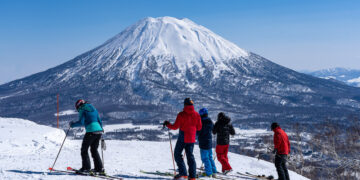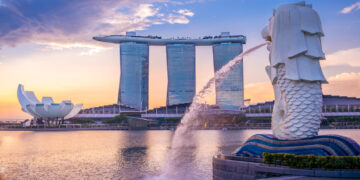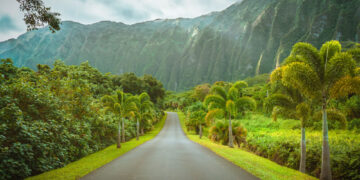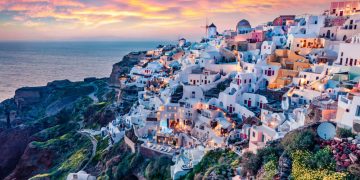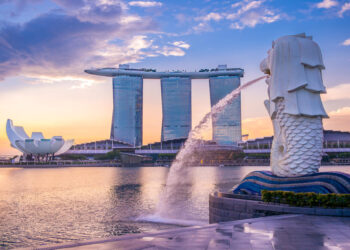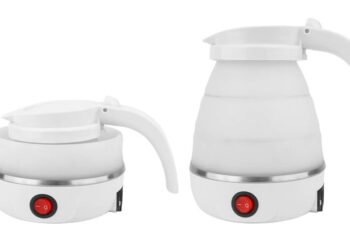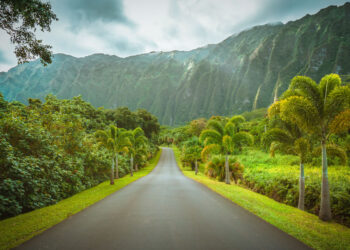The Japan Rail Pass offers exceptional value for those traveling around Japan, especially when using long-distance trains like the notorious Japanese bullet train, the Shinkansen. Here we list out the best ways to use the Japan Rail Pass.
With most international travelers entering Japan through Tokyo, the below lists the best ways to use the pass based on Tokyo as the original departure point. However, we will also list travel times by train from other major or nearby cities, as each destination can link to another closer destination as part of your itinerary.
To ensure you find the lowest possible prices for the Japan Rail Pass, which are set by the Japan Rail Group, buy your pass through authorized sales agents like JRPass.
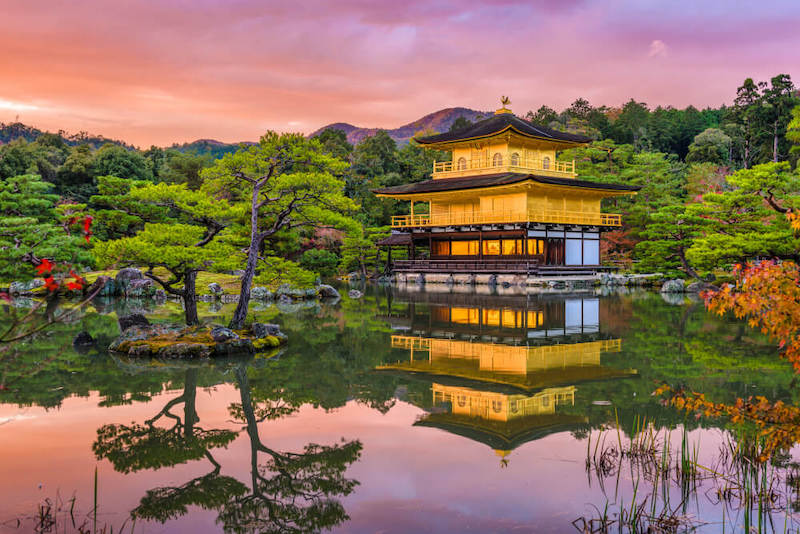
1. Kyoto: Japan’s Cultural Capital
There is no better place to start a list of the best uses for the Japan Rail Pass than Kyoto. The former capital of Japan is full of incredible temples, gardens, palaces, old architecture, and natural scenery. A must-visit for those looking to explore the more traditional side of Japan, Kyoto has plenty to fill an itinerary for over a week, though most visitors can see the key attractions in 2-4 days.
Travel Time From Key Cities
- Tokyo – 2.5 Hours
- Osaka – 15 Minutes
- Hiroshima – 1 Hour 40 Minutes
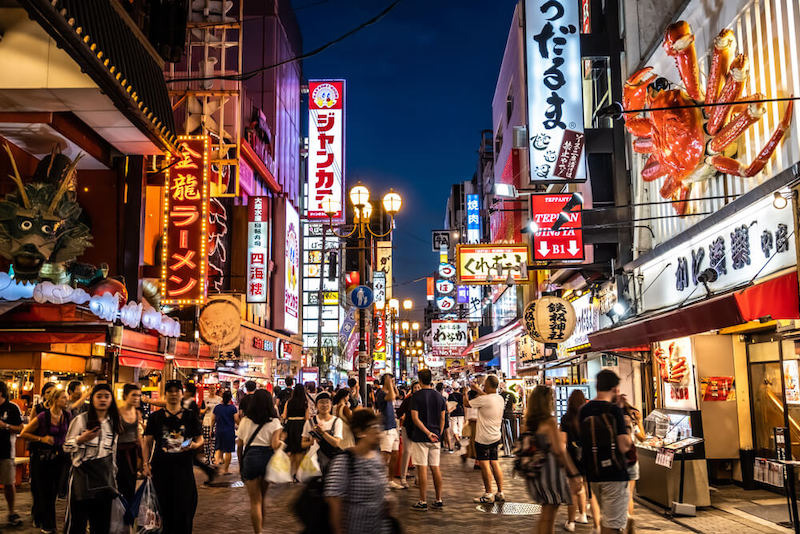
2. Osaka: Eat Until Stuffed in the Nation’s Kitchen
Japan’s third-largest city, though the second largest metropolitan area, Osaka has long held a counter-culture to the country’s capital. Osakans are considered more direct and louder than their Tokyo brethren. Historically, the city has been regarded as a merchant city and was the country’s rice-trading hub, where residents have a reputation as happily splurging on a night of eating and drinking to this day.
Worth 1-3 days as part of a Japan itinerary, it is possible to combine nights of street food and evening entertainment in Osaka with days of temple and garden visits in nearby Kyoto. Check out Dotomobori for the iconic Osaka food street, Osaka Castle for a bit of history, and Universal Studios Osaka for one of the country’s best theme parks.
Travel Time From Key Cities
- Tokyo – 2 Hours and 50 Minutes
- Kyoto – 15 Minutes
- Hiroshima – 1 Hour 30 Minutes
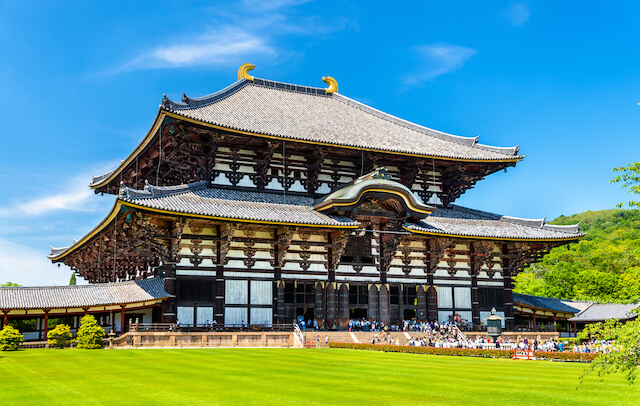
3. Nara: Visit the 8th Century Temples and Feed Deer From Your Hand
Long celebrated for its contributions to Japanese culture and history, Nara was Japan’s capital during the 8th century and has remained a fascinating city to visit over a millennia later. Nara makes for an easy day trip from Kyoto or Osaka, with several of Japan’s most impressive temples and shrines clustered together in the small city.
Check out Todai-ji and Horyuji-ji temples Kasuga-taisha Shrine, and make a leisurely stop by Isuien Garden right next to Todai-ji. Don’t miss the deer in Nara Park, who are world-famous for bowing to visitors to receive some deer snacks sold around the park.
Travel Time From Key Cities
- Kyoto – 45 Minutes
- Osaka – 45 Minutes
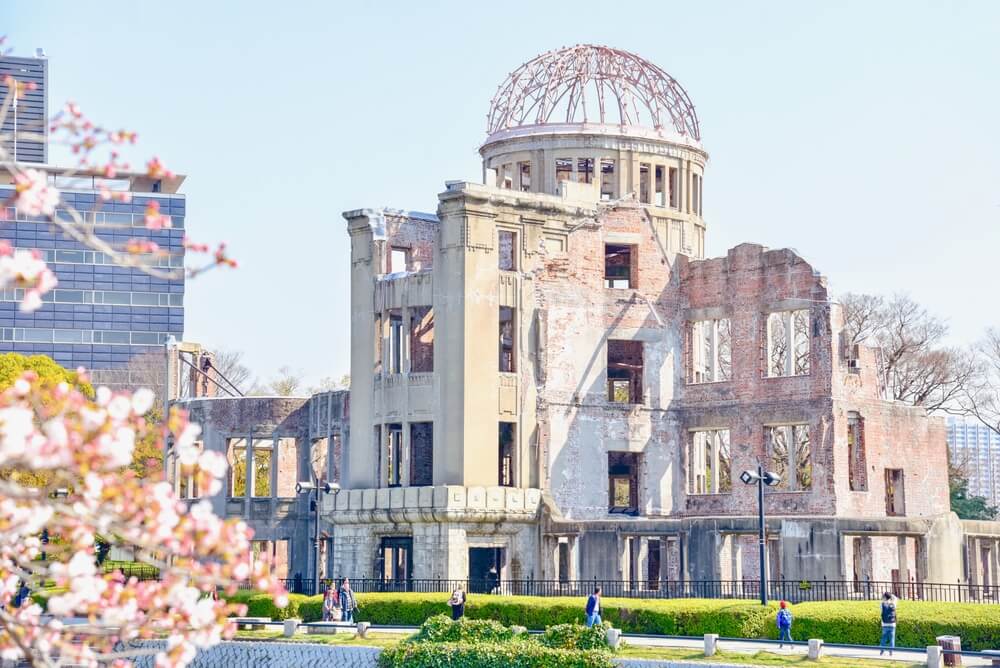
4. Hiroshima: Understand the Impact of Nuclear Warfare
One of Japan’s more sobering cities to visit, Hiroshima, is well known along with Nagasaki as the two cities devastated by the atomic bombs during the Second World War. However, the city was entirely rebuilt following the war, and the Peace Park and Memorial Museum today provides one of the best educational experiences in the country, detailing the consequences of nuclear weapons.
The city offers more beyond the museum, with nearby Miyajima island containing one of the country’s most iconic shrines with a torii gate located in the shallow waters offshore. The Japan Rail Pass also covers the ferry out to Miyajima.
An easy day trip from Kyoto or Osaka, Hiroshima is worth 1-2 days of a longer itinerary for those who have the time.
Travel Time From Key Cities
- Osaka – 1 Hour 30 Minutes
- Kyoto – 1 Hour 45 Minutes
- Fukuoka – 1 Hour
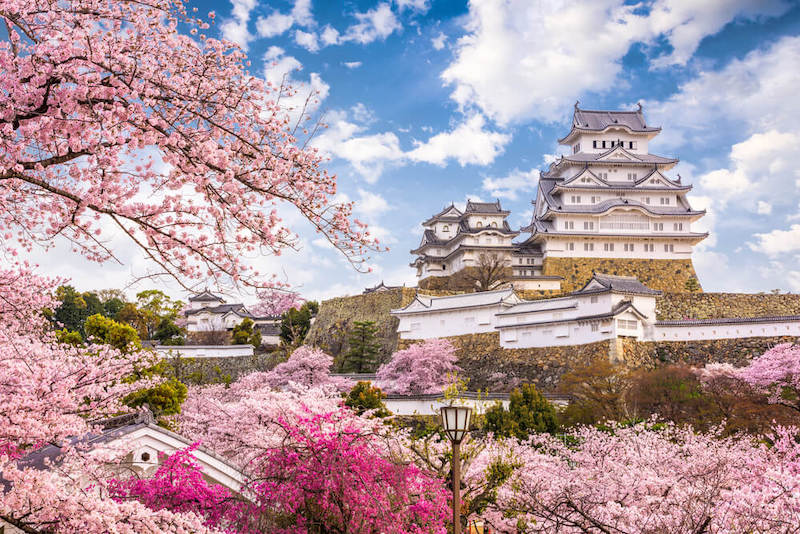
5. Himeji: Marvel at Japan’s Best Preserved Castle
Himeji is the perfect example of the Japan Rail Pass’s value for travelers. Its feature attraction Himeji Castle is located a couple of minutes by taxi or a long walk from the Shinkansen station.
Located between Hiroshima and Osaka on the Tokaido Shinkansen Railway Line, it’s possible to make a quick three-hour stop to see the castle or spend a day in the city for those who have more time.
Travel Time From Key Cities
- Kyoto – 45 Minutes
- Osaka – 30 Minutes
- Hiroshima – 1 Hour
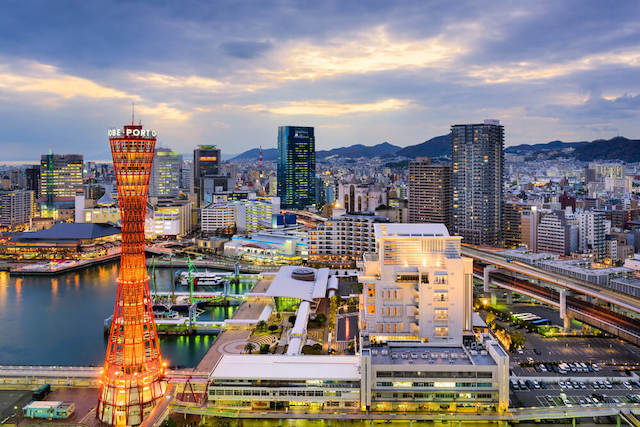
6. Kobe: Wander the Historic Port City and Sample Award Winning Steak
Only a short trip from Osaka or Kyoto on the Shinkansen, Kobe is great for a half-day to full-day visit for those with longer itineraries. The historic port city offers interesting European-style architecture, sake breweries, and most notably, plenty of restaurants offering the legendary marbled wagyu beef that’s become more famous globally than the city itself.
Consider combining a morning trip to see nearby Himeji and its castle with an afternoon wandering the streets of Kobe, enjoying a lunch or dinner at one of its many Japanese steakhouses.
Travel Time From Key Cities
- Osaka – 15 Minutes
- Kyoto – 30 Minutes
- Himeji – 30 Minutes
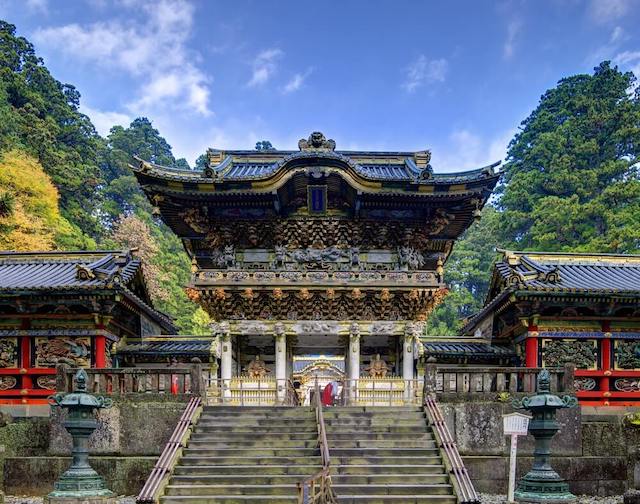
7. Nikko: Traditional Temples, Shrines, and Natural Scenery
One of the best day trips from Tokyo, Nikko is home to the Toshogu Shrine, one of Japan’s most famous shrines and the mausoleum for Tokugawa Ieyasu, a 17th-century ruler of Japan. In addition, the city offers several other notable temples, a historic bridge, and the broader area provides a stunning backdrop of natural scenery, with nearby Lake Chuzenji and the Kegon Waterfall being essential parts of a visit.
Worth a day trip and providing excellent value to your Japan Rail Pass, it is also practical to extend to an overnight trip for those looking to explore the area in-depth.
Travel Time From Key Cities
- Tokyo – 1 Hour 40 Minutes
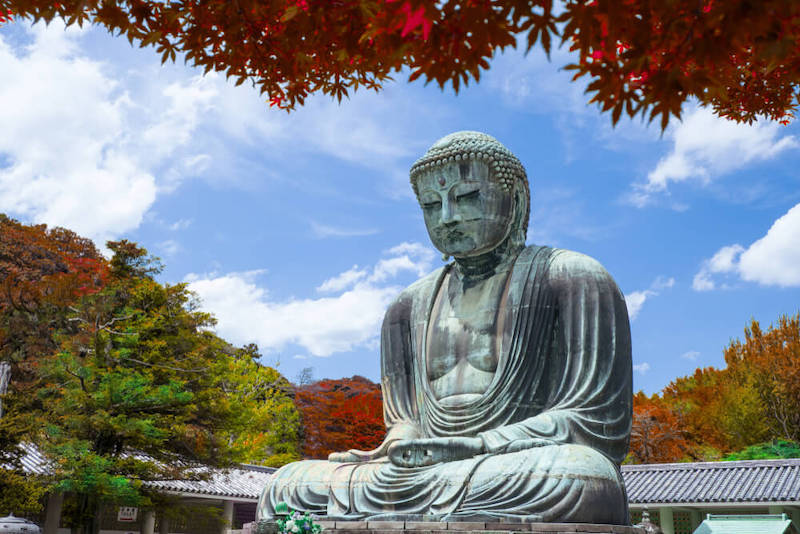
8. Kamakura: Big Mt. Fuji Views and a Big Buddha
The de facto capital of Japan for 150 years around the 13th century, Kamakura is full of historic temples and a laid-back atmosphere that contrasts with nearby fast-paced Tokyo. An easy day-trip from Tokyo, with local trains reaching the city in only 45 minutes, seaside Kamakura is home to one of the world’s largest seated buddhas. The over four-story bronze buddha is located at the Kotoku-in Temple.
The hillsides of the city and the beachfront offer views of Mt. Fuji on clear days, making the city an easy trip for those hoping to view the iconic mountain along with the city’s history.
Travel Time From Key Cities
- Tokyo – 45 Minutes
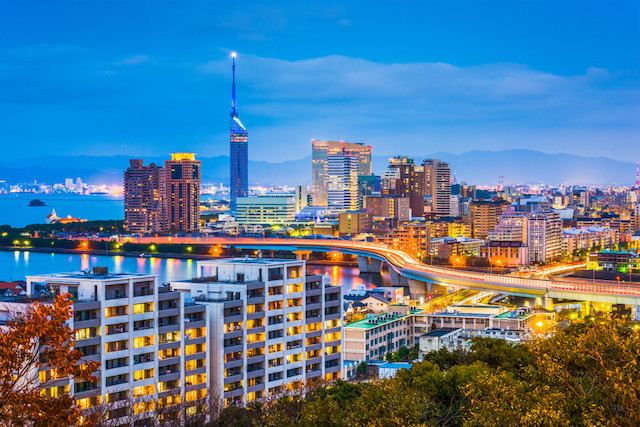
9. Fukuoka: A Launching Point for Touring Kyushu
The largest city on the island of Kyushu, Fukuoka is a great starting point for those traveling around the seismically active island that is full of smoldering volcanos and some of Japan’s best hot spring towns. In addition, the city is culturally unique and popular amongst Japanese tourists for its distinct regional cuisine, shopping, and nightlife.
Due to its distance from other popular destinations, Fukuoka is better for longer itineraries such as the 14-Day or 21-Day rail passes.
Travel Time From Key Cities
- Tokyo – 6 Hours
- Kyoto – 3 Hours
- Osaka – 2 Hours 45 Minutes
- Hiroshima – 1 Hour
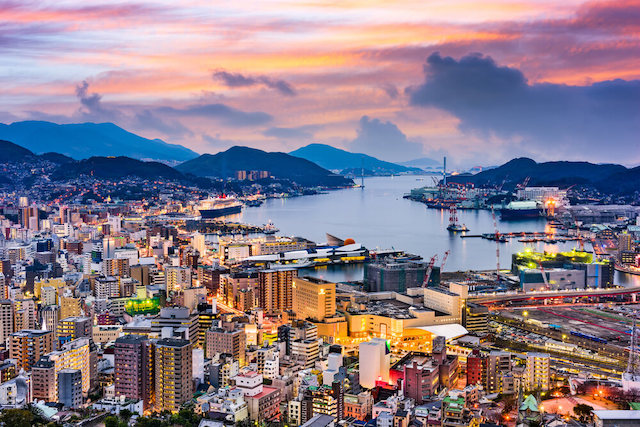
10. Nagasaki: The First International City in Japan
Nagasaki was the first large city opened to foreigners when trade began with Dutch and Chinese there in 1641. To this day, the city continues to have a more international vibe compared to many Japanese cities, with Tokyo being the most apparent anomaly. Devastated by the atomic bomb during the Second World War, Nagasaki today offers a unique mix of attractions from temples to museums to mountain views.
An essential stop on a tour of Kyushu, Nagasaki is worth a day tour or overnight stay for those with time in their itinerary. The city’s laid-back atmosphere and proud local culture display the apparent differences between Japanese cities and prefectures.
Travel Time From Key Cities
- Fukuoka – 1 Hour 40 Minutes
- Nagasaki – 2 Hours
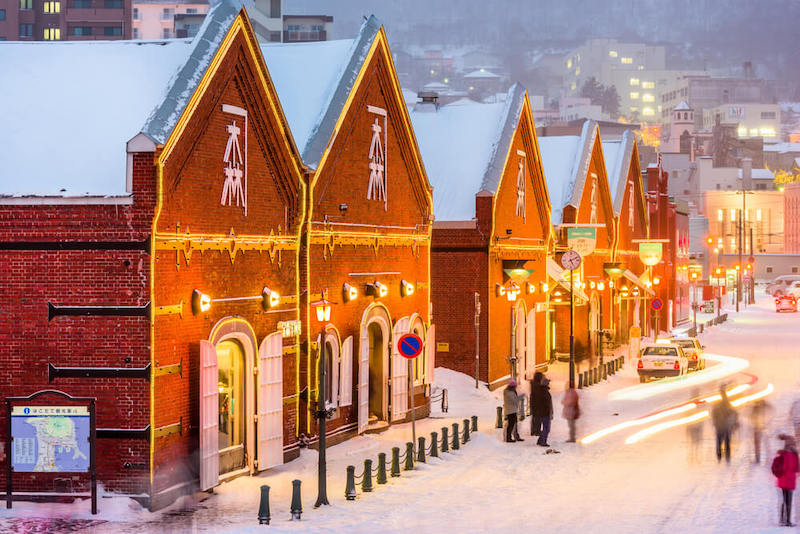
11. Hakodate: An Entry Point into Hokkaido
With the Hokkaido Shinkansen opening in 2018, Japan Rail Pass holders can finally reach Japan’s most northern island by high-speed train in just over 4 hours from Tokyo Station. Further line construction will have the Shinkansen extended to Hokkaido’s largest city, Sapporo, in 2030.
The port city of Hakodate and greater Hokkaido offers visitors access to explore the pristine scenery of its countryside and sample what is regarded as some of the country’s best produce, dairy, and seafood.
Those with longer itineraries can include a multi-day tour of Hokkaido, with regional trains covering the island and accessible from Hakodate.
Travel Time From Key Cities
- Tokyo – 4 Hours
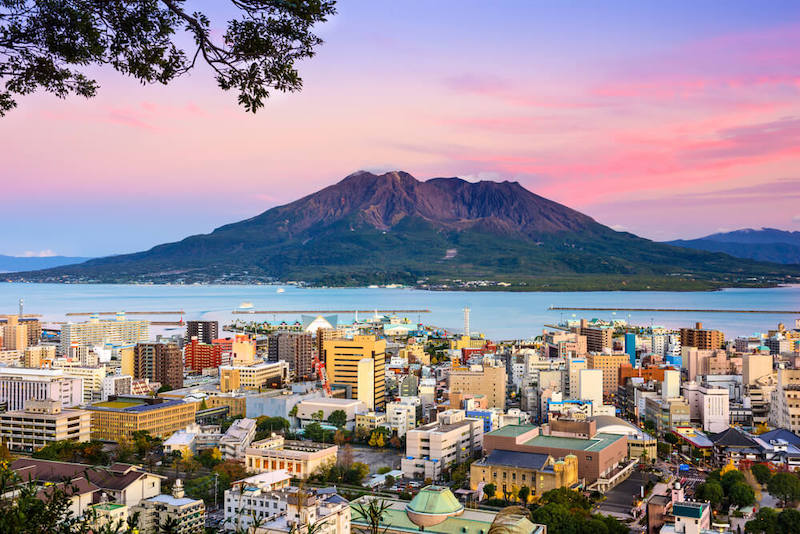
12. Kagoshima: Beaches, Gardens, and Hot Springs
Located at the southern tip of Kyushu, Kagoshima has a subtropical climate, including warm, clear waters and soft sand beaches that are as close as you’ll find to Okinawa in the main Japanese Islands. Surrounded by lush green scenery and home to palm trees that create a Hawaiian-like atmosphere, Kagoshima offers gardens, history, and art museums, with a view from any spot of the city of Sakurajima. This volcano juts out of Kagoshima Bay offshore, and is the most active one in japan, lately erupting over a thousand times a year.
Consider Kagoshima as a temporary base for tours around Kyushu, with ferries out to nearby islands offering great day trips and subtropical landscapes being a key attraction in the region.
Travel Time From Key Cities
- Tokyo – 4 Hours
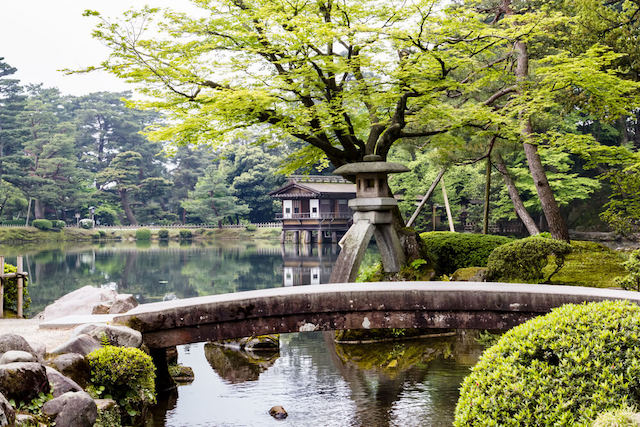
13. Kanazawa: Edo-era Architecture and Japanese Gardens
Situated in Ishikawa Prefecture along the West Coast of Honshu, Kanazawa has some of the best-preserved Edo-era districts in Japan, with traditional wooden homes and shops lining stone slab streets that avoided the destruction of the Second World War.
Kenroku-en in Kanazawa is considered one of the three great gardens in Japan, with its development starting in the 1620s. The garden’s use of natural features and water elements has played a significant role in influencing Japanese garden design since.
Worth an overnight stay as part of a journey across Japan, Kanazawa is also possible to be visited in a day trip from major cities for those who can start early and finish late.
Travel Time From Key Cities
- Tokyo – 3 Hours
- Osaka – 2 Hours 45 Minutes
- Kyoto – 2 Hours 30 Minutes
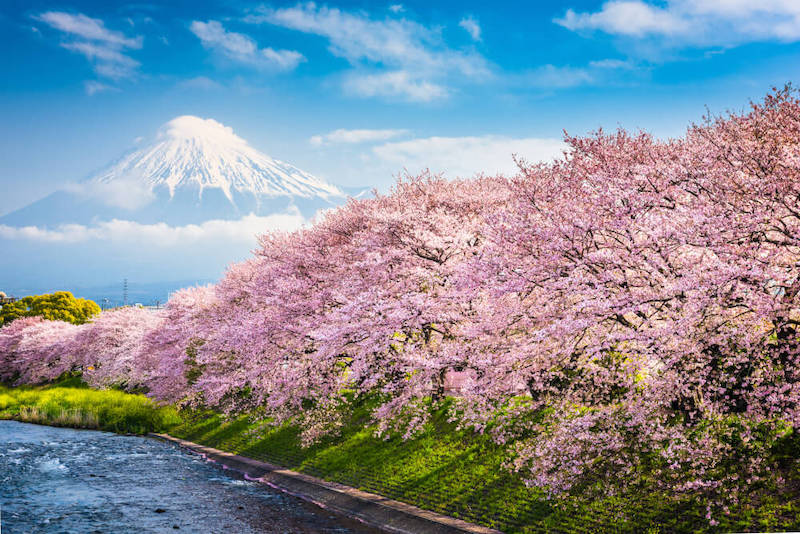
14. Cherry Blossom Hunting in the Spring
The famed cherry blossoms of Japan, known locally as sakura, make spring a peak travel period for visitors looking to view the iconic pink-flowered trees. However, one challenge with planning a trip to see the cherry blossoms is the unpredictability of their weather-dependent peak blossom.
Booking for an exact week in Tokyo or Kyoto may find that you were a few weeks early or a few weeks late, with the peak blossom times ranging as far as a month apart.
Avoid the stress of trying to time your trip perfectly to see the perfect bloom of cherry blossoms by using your rail pass to hunt them down with the full season in the main islands of Japan starting from mid-March in the south to mid-May in Hokkaido.
Within a few days of arriving, you’ll be able to narrow in on where the full bloom will be during your trip. Leave flexible dates in your itinerary and get train tickets to the optimal cherry blossom locations when you arrive.
There are incredible viewing spots across the country, where you can see temples, shrines, rivers, or mountains complemented by the beautiful pink flowering trees. Jump on a train in the direction of the full bloom, taking full advantage of the flexibility of your Japan Rail Pass.
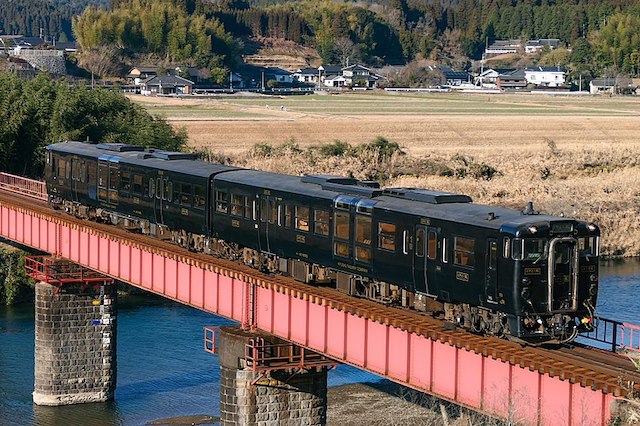
15. Hisatsu Line: Breathtaking Natural Scenery
Crossing a distance of 125 kilometers of Kyushu between Kumamoto and Kagoshima prefectures, the Hisatsu Line has some of the best train scenery in Japan, which says a lot for a country covered by railways. The journey winds its way through mountains and lush green valleys, giving one of the best perspectives of the Kyushu Landscape.
Those with longer itineraries or spending time on Kyushu will find that this line combines well with visits to Kumamoto and its castle and Kagoshima well for a couple of days in an itinerary.
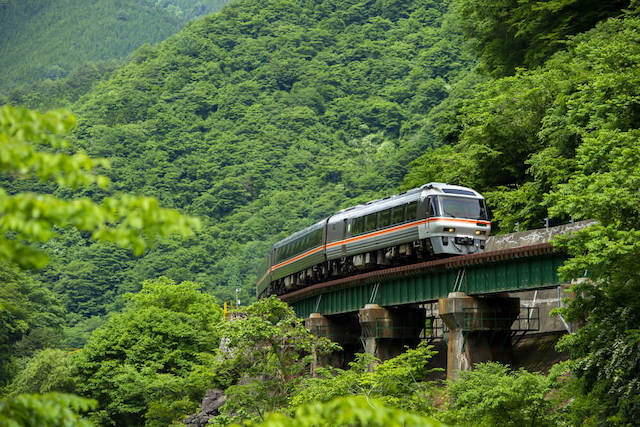
16. Wide View Hida Express Train Scenery
Winding through lush green or snow-covered mountain scenery depending on the season, the Wide View Hida Express train is one of Japan’s top scenic railways included with the Japan Rail Pass. Connecting Nagoya to the south with Toyama to the north, the train’s name describes the wide windows, allowing for expansive views of Japan’s natural scenery.
The total journey takes 4 hours along the entire line, with Takayama and the nearby Hida Folk Village making for an unmissable stop to book in the middle of your railway journey.
Start your journey in either Nagoya or Toyama, with Shinkansen connections to both from Tokyo, or starting in Nagoya for those traveling from Osaka or Kyoto.
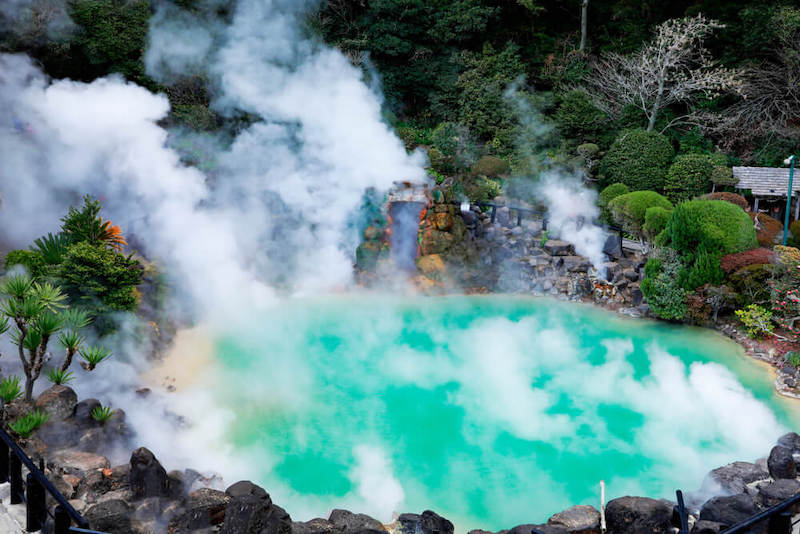
17. Beppu: Kyushu’s Top Onsen City
Easily accessible with the Japan Rail Pass, Beppu City on Kyushu takes full advantage of the island’s geothermal springs, with eight hot springs located within the city. Take a day trip through the city for hot spring visits, or make a quick stop as you tour through Kyushu with the ease of the Japan Rail Pass.
Travel Time From Key Cities
- Fukuoka – 1 Hour 30 Minutes
- Hiroshima – 2 Hours 10 Minutes
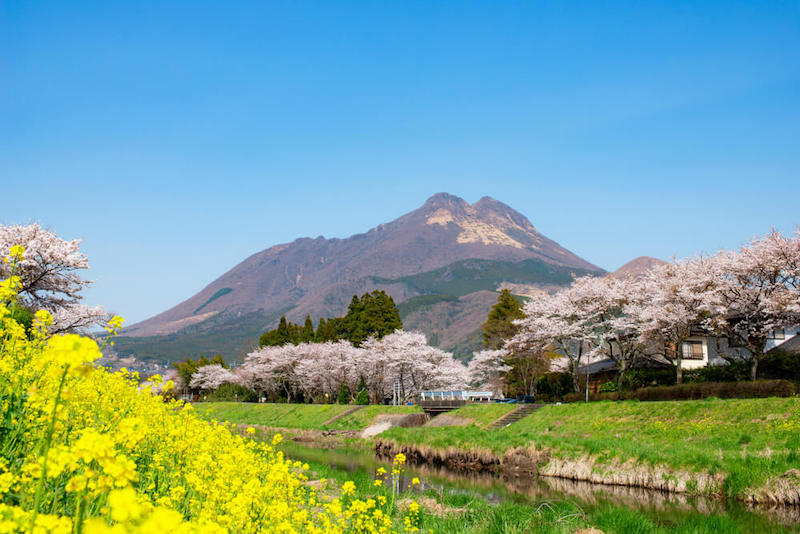
18. Yufuin Onsen: Mountain Views from an Onsen
Heading up into the mountains from Beppu, Yufuin is an onsen town that offers a different experience than what can be found downhill in the city. Yufuin offers several open-air hot springs with panoramic views of nearby Mount Yufu and the surrounding mountain landscape.
Worth making the extra journey from Beppu for those looking to dedicate time for relaxation in their itineraries, Yufuin is a great resort town to soothe the body and mind from hectic travel schedules.
Travel Time From Key Cities
- Beppu – 1 Hour
- Fukuoka – 2 Hours 30 Minutes
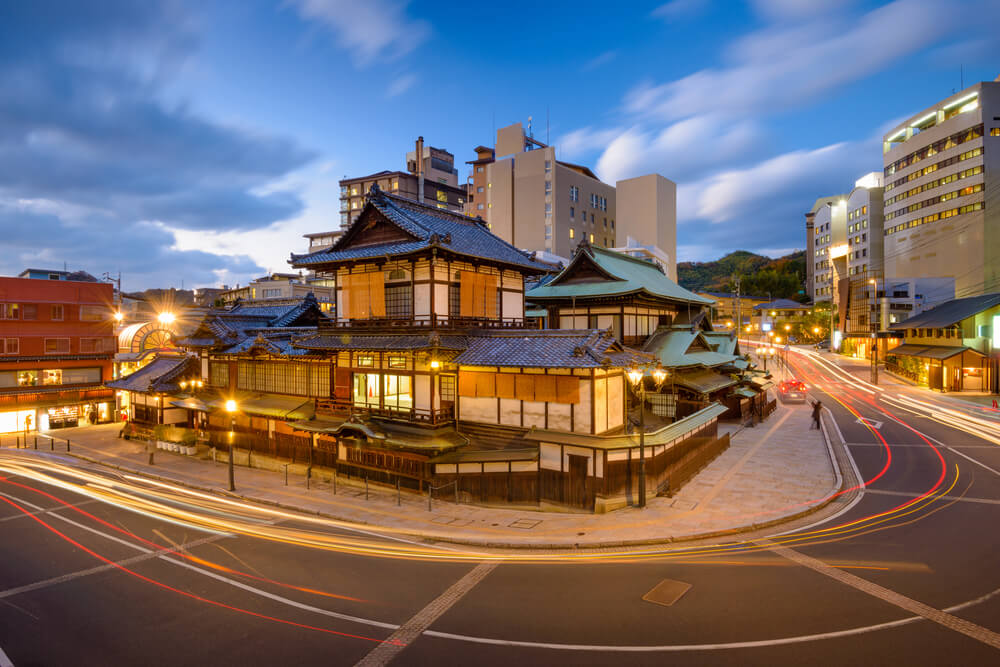
19. Dogo Onsen: An Onsen With History
One of Japan’s oldest onsen resorts, Dogo Onsen in Matsuyama City, Ehime Prefecture, is a must-visit for those touring Shikoku Island. Popular amongst Japanese tourists, the onsen dates back to 1894, with the area around it, including the tram station offering glimpses into Meiji-period western-style architecture from the late 19th century.
Relatively isolated from the typical tourist paths through Japan, Dogo Onsen and Shikoku’s natural scenery is entertaining for a couple of day detour through Japan’s least-visited main island.
Travel Time From Key Cities
- Osaka – 4 Hours 15 Minutes
- Kyoto – 4 Hours 30 Minutes
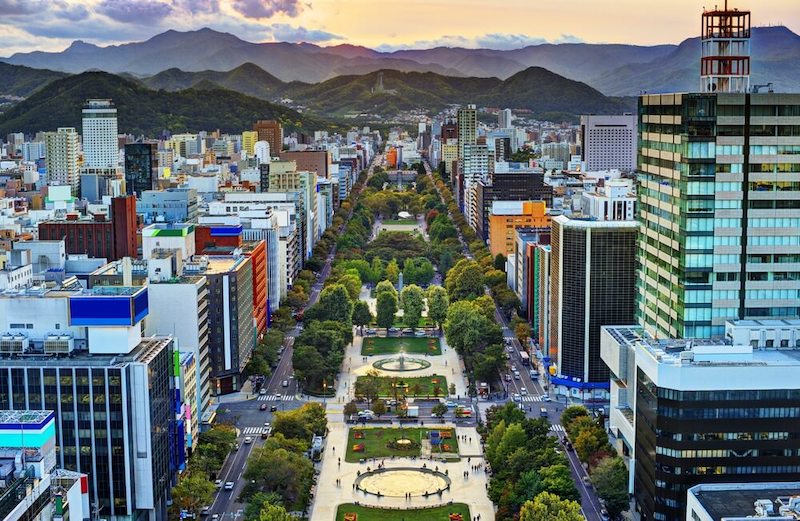
20. Sapporo: Japan’s Newest and Snowiest Big City
The most northern big city in Japan, Sapporo is famed for its high winter snowfall totals and the annual Sapporo Snow Festival, where the city is turned into a winter wonderland with massive snow and ice sculptures.
Enjoyable to visit in any season, Sapporo is a relatively young city by Japanese standards, developing from the late 19th century. Famed for its seafood markets, brewery, ramen restaurants, American-style architecture, and easy access to other Hokkaido attractions, Sapporo is an essential destination for longer Japanese travel itineraries.
Until the Hokkaido Shinkansen reaches Sapporo in 2030, the city is most likely only practical for the 21-Day Japan Rail Pass due to the travel time to get to the city, though, for those who can find the time, it offers a unique Japanese city experience.
Travel Time From Key Cities
- Hakodate – 4 Hours
- Tokyo – 8 Hours
